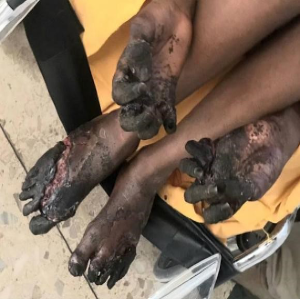Symmetrical Peripheral Gangrene resulting from application of henna: a rare clinical occurrence

Submitted: 14 April 2023
Accepted: 19 May 2023
Published: 27 December 2023
Accepted: 19 May 2023
Abstract Views: 156
PDF: 120
Publisher's note
All claims expressed in this article are solely those of the authors and do not necessarily represent those of their affiliated organizations, or those of the publisher, the editors and the reviewers. Any product that may be evaluated in this article or claim that may be made by its manufacturer is not guaranteed or endorsed by the publisher.
All claims expressed in this article are solely those of the authors and do not necessarily represent those of their affiliated organizations, or those of the publisher, the editors and the reviewers. Any product that may be evaluated in this article or claim that may be made by its manufacturer is not guaranteed or endorsed by the publisher.

 https://doi.org/10.4081/pjm.2023.326
https://doi.org/10.4081/pjm.2023.326




